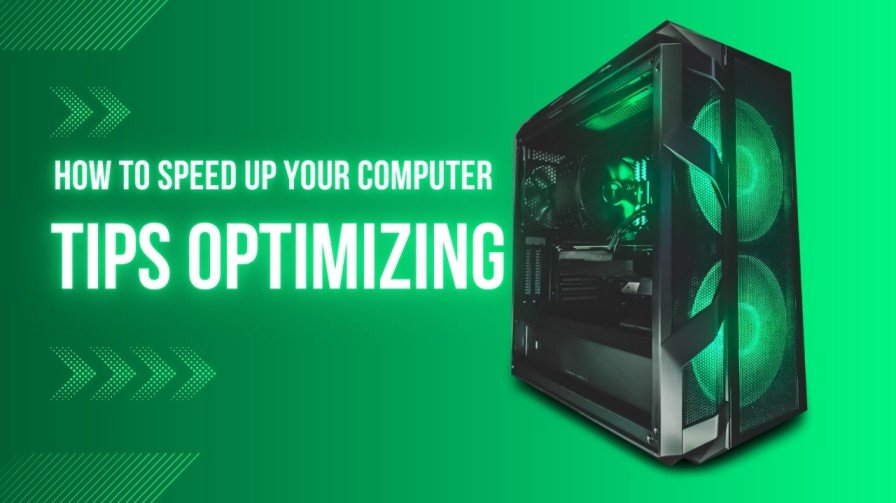Explore your digital molasses! ⏰ Discover 10+ powerful tips to speed up your computer & optimize performance. From RAM upgrades to SSD magic, banish lag & reclaim lightning-fast responsiveness.
Does your computer feel like it’s stuck in molasses? Does opening a simple program take an eternity, and web browsing resemble snail-mail? Fear not, sluggish tech warrior! This guide equips you with powerful tips to optimize your computer’s performance, bringing back its lightning-fast glory.
Unleashing the Beast Within – Essential Steps
1. Tame the Startup Stampede
Many programs launch silently at startup, hogging precious resources. Use System Configuration (Windows) or Activity Monitor (Mac) to identify and disable non-essential programs from automatically running at boot. This simple step can be a major speed booster.
2. Clean Up the Clutter
Your hard drive is like your attic – junk accumulates over time. Delete unnecessary files, temporary data, and old programs you no longer use. Utilize tools like Disk Cleanup (Windows) or CleanMyMac X (Mac) for thorough cleaning.
3. Defragment for Efficiency
Fragmented files on your hard drive scatter data, slowing down read/write speeds. Defragment your hard drive periodically (monthly for traditional HDDs, less often for SSDs) to optimize file organization and boost performance.
4. Upgrade RAM for a Power Surge
RAM acts as your computer’s short-term memory. Insufficient RAM can lead to sluggishness. If possible, consider upgrading your RAM for a significant performance boost, especially if you regularly deal with demanding tasks like multitasking or resource-intensive software.
5. Power Up with SSD
If your computer uses a traditional HDD, consider upgrading to a Solid State Drive (SSD). SSDs lack moving parts, offering significantly faster data transfer speeds and overall performance. The investment can be life-changing for older machines.
6. The Update Equation
Software updates often include performance improvements and bug fixes. Ensure your operating system, drivers, and applications are all up-to-date. Automatic updates can streamline this process.
7. Disable Visual Effects
Eye candy like animations and transparency can eat into resources. Disable unnecessary visual effects (Windows) or reduce motion (Mac) to free up processing power for more critical tasks.
8. Close Background Bandits
Many programs run silently in the background, consuming resources. Use Task Manager (Windows) or Activity Monitor (Mac) to identify and close inactive programs, especially resource-intensive ones.
9. Scan for Malware and Spyware
Malicious software can significantly slow down your system. Run a thorough antivirus and anti-malware scan to detect and remove any potential threats.
10. Consider Browser Optimization
Your browser can be a performance bottleneck. Try lightweight browsers like Brave or Vivaldi, or utilize extensions like uBlock Origin to block trackers and ads, improving browsing speed and privacy.

